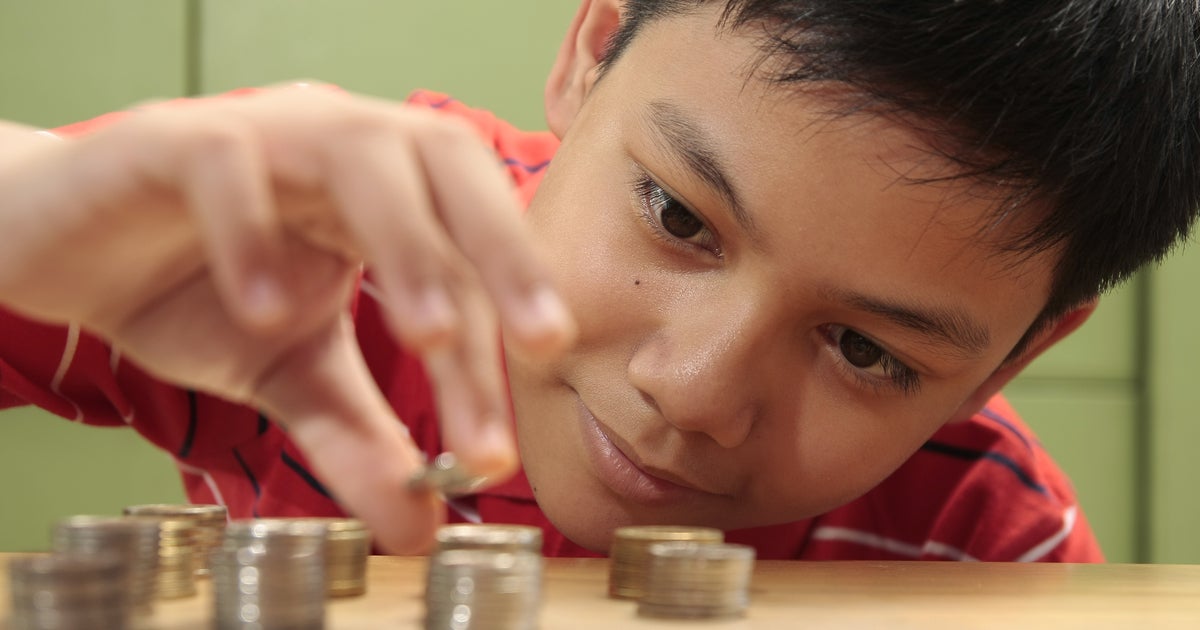Co-author: Effie Zhaos
Raising kids is rewarding, but it brings plenty of responsibility. In just 18 years, you will have guided your child through toilet training and tying shoelaces to driving a car. So it can seem like a big ask to also teach your kids good money habits, but it’s a case of ‘learn now or pay later’, which translates to: if your kids don’t learn about money they may never move out!
Research shows that the way we handle our finances as adults is strongly influenced by our childhood experiences with money. The reality is that we teach our children plenty about the world just through our own behaviours.
A study by Cambridge University found that children’s basic attitudes to money are formed by age seven. It happens because they closely watch and listen to their parents, soaking up plenty of information about money, how it should be handled and its impact – good and bad – on our lives. Psychologists call it ‘behavioural shaping’ and it can have a lasting impact.

How to talk about money with kids
The trick is not to stress over what you’re saying about money in front of the kids. Sure, waving the credit statement at your other half while you yell, “You spent how much on those new golf clubs?” won’t help. It’s more about having conversations that encourage your kids to have a positive attitude towards money. Something as simple as chatting about your grocery budget while you’re out shopping, or helping them plan for the next family holiday, can be a great way to engage children.
One great savings game you can give children (or do together as a family) is slapping their name on a glass jar and calling it the 52-week challenge. You start by putting away just $1 in the first week, and then gradually increase the amount by $1 a week throughout the year. So you save $2 in week two building up to $52 at the end of December. If you complete the challenge, you’ll have saved $1,378. The deal might be that you’ll match the savings for the child who can meet the challenge.
We live in a digital world, which can make things a little tougher. Many of your kids’ purchases will be ‘invisible’. Then there are things like Afterpay as they get older. Explain how these buy now and pay later services work and how they can encourage you to spend more without you realising.

Valuable money lessons for all ages
Where do you start? I remember someone once saying that when your child first shows an interest in books, you don’t start by giving them War and Peace, and it’s the same with money. Here are some age-appropriate tips:
Preschoolers (3-5 years)
- Play shop using pretend money so they understand the concept of trading money for goods
- Explain where money comes from – for example, you are paid for working
- Describe what $2 or $5 actually buys
- Let them practise putting away their money in a piggy bank
Ages 6-9
- Give pocket money as a combination of notes and coins to help to familiarise kids with the different denominations
- Set up a savings account specifically for them. Explain that they’ll be paid extra money (interest) by having their money in an account
- Talk to your children about the difference between needs and wants, and how they can budget their money based on these
- Teach kids to compare prices when at the shops or to look at catalogues before buying something
- Encourage them to set savings goals and explain how long it will take to achieve them. If they want a toy worth $25, explain that if they save $1 a week it will take 25 weeks. Consider using a chart so they can see their progress
- You might offer to match their savings to give them an extra incentive to save. For every dollar they save you might opt to match it with 50c or even $1
- Teach them about the importance of giving to help those in need. You might start with giving away toys they no longer play with before progressing to money
- If you’re buying an app on a tablet, don’t just put in the password and let them have it. Explain that it is real money and give them an idea of what that could get them in the ‘real’ world. You might even ask them to pay for it with their pocket money

Ages 10-15
- Show them what bills look like and how you plan to pay them
- They may not be able to get a ‘proper’ job, but encourage them to find ways to make some extra cash, like walking the dog or washing the car
- Explain the concept of credit and borrowing money. If they want to buy something they can’t afford, consider lending them money and getting them to pay you back. You can even set out a repayment schedule
- Teach the basics of the sharemarket. You can pretend to invest in companies and then watch how they perform
- Get them to put their own money towards an iTunes voucher. They will then spend their own money for apps or songs. This will make them think twice before buying something
16-plus
- Encourage them to get a casual job
- If they are earning money, make them responsible (or at least partly) for some of the bills you may have been taking care of for them. For example, maybe they need to pay for their own mobile phone, or buy gifts for friends’ birthdays
- Once they have built up some savings, they can begin to invest. You might start by investing in an ETF, managed fund or buying a small parcel of shares in a company they have heard of. Be careful about whose name you invest in, as there could be tax implications. Micro-investing apps, like Hatch and Sharesies, are a good and cheap introduction to the world of share trading. Learn more in our story: A Guide to Micro-Investing Apps for Beginners.
- Talk to them about buy now, pay later (BNPL) schemes. Explain how they work and encourage them to do the opposite and save for what they want

What about KiwiSaver?
KiwiSaver is generally talked about in relation to two main groups: those who are planning for retirement and young adults who are saving for their first home. Very rarely are children included in the KiwiSaver conversation.
But there are many reasons why they should be. Enrolling your child (or yourself) in a KiwiSaver scheme doesn’t cost anything. Of course, if your child is young, they won’t have a salary or an employer to make contributions, so you’ll have to make payments on their behalf if you want to build up their savings. But the earlier you sign them up, the more potential they’ll have to grow their savings for a first home or retirement.
KiwiSaver is an extension of forming good money habits. Children won’t see immediate rewards from putting money into their account, but any money they put aside now will pay off for them later in life. Talk to your kids about KiwiSaver, explain what it is, get them to help with their enrolment process. You’re never too young to learn good financial habits!
Compare KiwiSaver providers for free with Canstar!
Enjoy reading this article?
You can like us on Facebook and get social, or sign up to receive more news like this straight to your inbox.
By subscribing you agree to the Canstar Privacy Policy




Share this article